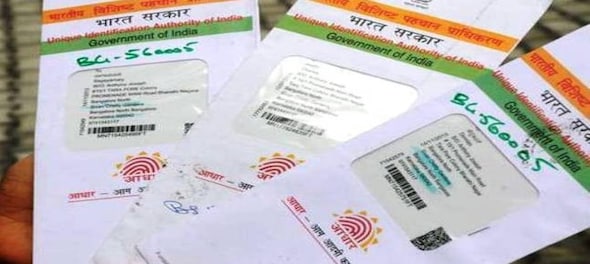
The Unique Identification Authority of India (UIDAI) has recently announced a comprehensive update to the Aadhaar (Enrolment and Update) rules. The revision introduces user-friendly changes aimed at making Aadhaar enrolment and updates more accessible for residents and non-residents alike.
Live TV
Loading...
These regulations may be called the Aadhaar (Enrolment and Update) Amendment Regulations, 2024, UIDAI said in a notification.
Here are the changes introduced by UIDAI:
Updated forms for enhanced convenience
UIDAI has introduced new forms for both Aadhaar enrolment and updates.
These forms are now tailored for residents and non-residents (NRIs), with specific categories based on age and address.
The fresh approach is set to eliminate confusion and streamline the application process.
Two paths to update information
Unlike the previous rules, the new regulations offer two convenient ways to update information in the Central Identities Data Repository (CIDR).
Individuals can choose between visiting an enrolment centre or utilising the official website/mobile application for seamless updates. This marks a departure from the 2016 rules, which only allowed online address updates.
Form replacements for clarity
The existing forms for Aadhaar enrolment and details update have been replaced with new, simplified versions. The updated Form 1, designed for residents and non-residents with proof of address in India aged 18 and above, now streamlines the process and ensures clarity in the information provided.
For non-resident individuals, especially those with addresses outside India, specific forms (Form 2 for enrolment and updation) have been introduced.
NRIs are required to provide a valid Indian passport as proof of identity, and an email ID becomes mandatory.
Forms 3, 4, 5, 6, and 8 have been introduced to cater to the enrolment and updates for children of various age groups, both resident and NRI.
The updated rules also address the enrolment of resident foreign nationals, both above and below 18 years of age, introducing Forms 7 and 8, respectively.
Foreign nationals must provide details such as a foreign passport, OCI Card, valid long-term visa, and an email ID.
Documented proof for complete date of birth
A notable change in the updated rules is the requirement for documentary proof if the age of an individual is declared or approximate.
This ensures that the complete date of birth is printed on the Aadhaar card, enhancing accuracy and authenticity, UIDAI said.
Periodic updates for continued accuracy
UIDAI has introduced Form 9, emphasising the need for Aadhaar number holders to update documents or information every ten years from the date of the Aadhaar generation.
This move aims to ensure the continued accuracy of information in the Central Identities Data Repository.
UIDAI has actively encouraged people to update their Aadhaar details, especially if not done in the last 10 years.
(Edited by : Amrita)
First Published: Jan 19, 2024 10:59 AM IST
Check out our in-depth Market Coverage, Business News & get real-time Stock Market Updates on CNBC-TV18. Also, Watch our channels CNBC-TV18, CNBC Awaaz and CNBC Bajar Live on-the-go!


BJP's Hindi heartland dominance faces test in phase 3 polls
May 2, 2024 9:14 PM
Lok Sabha Election: Re-elections at a Ajmer booth after presiding officer misplaces register of voters
May 2, 2024 4:54 PM

